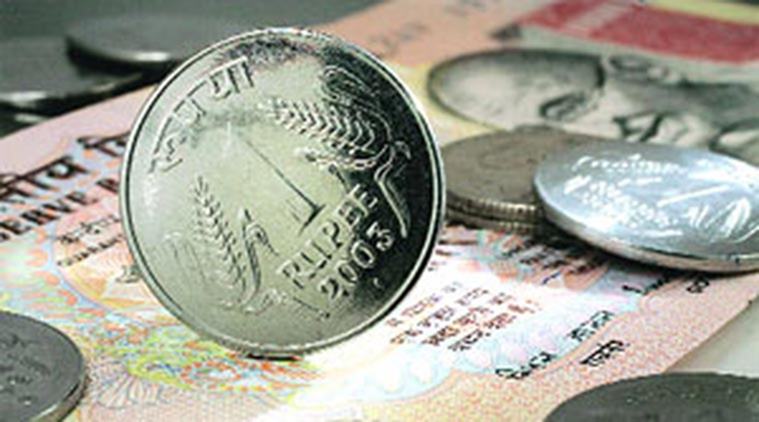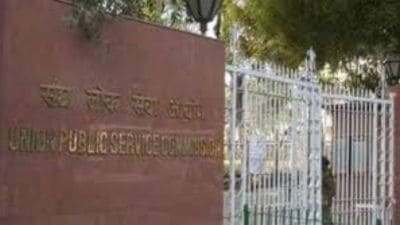- India
- International
Despite demonetisation, India’s GDP growth stays 7 per cent: Govt data
India GDP growth: The Economic Survey for 2016-17 had projected India’s GDP growth rate to reduce by 0.25-0.5 per cent in 2016-17 owing to cash squeeze in the economy following demonetisation.
 India GDP growth: The numbers released today show that growth decelerated to 7.0 per cent in October-December quarter even as sectoral data reflected minimal impact of demonetisation on account of a sharp rise in agricultural growth and a pickup in manufacturing sector growth.
India GDP growth: The numbers released today show that growth decelerated to 7.0 per cent in October-December quarter even as sectoral data reflected minimal impact of demonetisation on account of a sharp rise in agricultural growth and a pickup in manufacturing sector growth.
The economy clocked a faster-than-expected growth of 7 per cent in fiscal third quarter, notwithstanding the demonetisation of high-value banknotes in November and the resultant impact on output and well as consumption. Data released by the Central Statistics Office (CSO) on Tuesday showed that the rate of economic growth in the three months ending December slowed marginally from the 7.4 per cent in the preceding quarter. The Statistics office stuck to its last month’s projection that the economy will grow at 7.1 per cent in the year to March, in line with the advance estimate of GDP growth released in January. GDP growth was pegged at 7.9 per cent in the previous financial year.
The numbers released today show that growth decelerated to 7.0 per cent in October-December quarter even as sectoral data reflected minimal impact of demonetisation on account of a sharp rise in agricultural growth and a pickup in manufacturing sector growth. Nearly all research agencies had forecast that growth estimates for the economy would slide because of the slowdown in consumption due to demonetisation.
The Economic Survey for 2016-17 had projected India’s GDP growth rate to reduce by 0.25-0.5 per cent in 2016-17 owing to cash squeeze in the economy following demonetisation. The Reserve Bank of India (RBI) in its Sixth Bi-monthly Monetary Policy Statement on February 8 had revised downwards GVA growth forecast for 2016-17 to 6.9 per cent from its December estimate of 7.1 per cent. Last week, National Council of Applied Economic Research cut its growth forecast to 6.9 per cent from its earlier estimate of 7.6 per cent.
Analysts noted that since the early estimates of quarterly estimate on gross value addition relied heavily on available data from the formal sector, which is expected to have weathered the note ban better than the informal sector, the first quarterly estimate issued on Tuesday may not fully capture the impact of the note ban.

Subsequent estimates that draw from wider data sources, may well revise the quarterly growth downward, something that was partly corroborated by government officials.
When asked whether the GDP growth numbers factored in the impact of demonetisation, Chief Statistician TCA Anant said, “I can only tell you what third quarter figures show. You may interpret them in whichever way you like…More numbers will come in future and we will update accordingly…am not here to attack or defend “
In a press briefing after the data was released, Anant said that policies like demonetisation are “difficult to assess without lot of data coming in”. The second advance estimates include advance corporate filings and data for full corporate filings will be available only by year-end, he added.When asked that companies in their results have declared a decline in consumption due to demonetisation, Anant said, “There are many items in consumption. Durable goods are only a part of it…other than that, there are other things in consumption like agricultural production and others, which have shown growth and that’s why overall consumption is showing a growth.”
Commenting on the GDP data, Economic Affairs Secretary Shaktikanta Das said this year growth figures are on a high base of last fiscal and numbers “do not show much negative impact of demonetisation”.
Overall, in gross value added (GVA) terms, growth declined to a six-quarter low of 6.6 per cent during the third quarter of this fiscal, from 6.7 per cent during the preceding quarter and 7.0 per cent during the corresponding quarter last year. For 2016-17, GVA growth is seen at 6.7 per cent, down from 7.7 per cent last year. India’s GDP had grown at 7.9 per cent in 2015-16.
Most economists expressed surprise at the numbers. “The rebound in growth in Q4 FY2017 may not be particularly strong. Therefore, GVA growth may still end up being sub-7 per cent in FY2017. Subsequent estimates that draw from wider data sources, may well revise Q3 FY2017 growth downward,” ICRA’s Principal Economist Aditi Nayar said.
Madan Sabnavis, Chief Economist, CARE Ratings said, “The estimates are a pleasant surprise with Q3 growth at 7 per cent and full year growth at 7.1 per cent against our expectation of 5.4 per cent for Q3…the demonetization impact has been negligible and concentrated in few sectors such as construction and real estate.”
Buzzing Now
Apr 16: Latest News
- 01
- 02
- 03
- 04
- 05






































